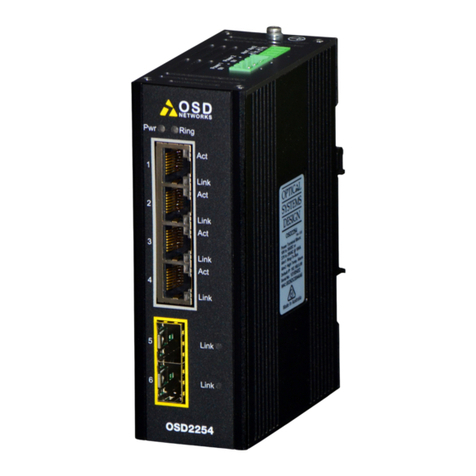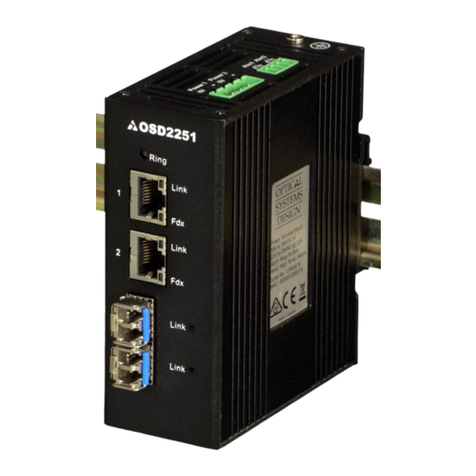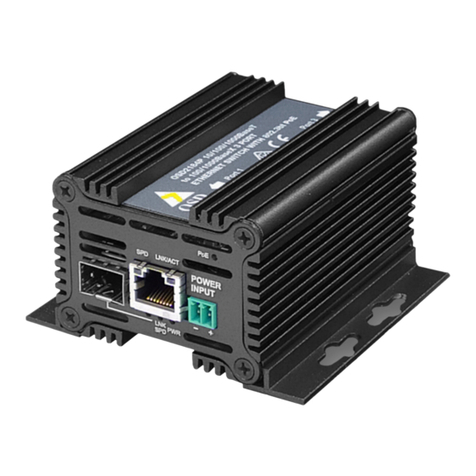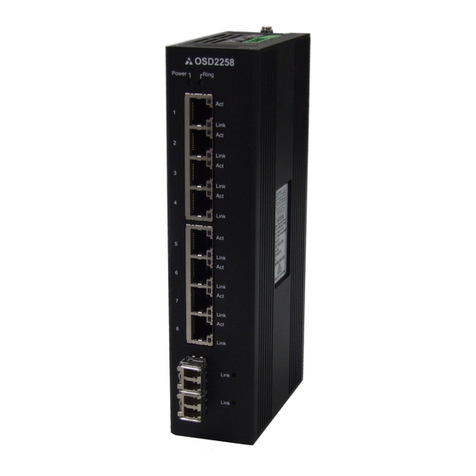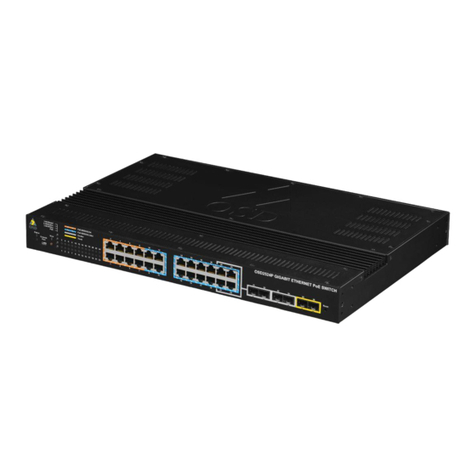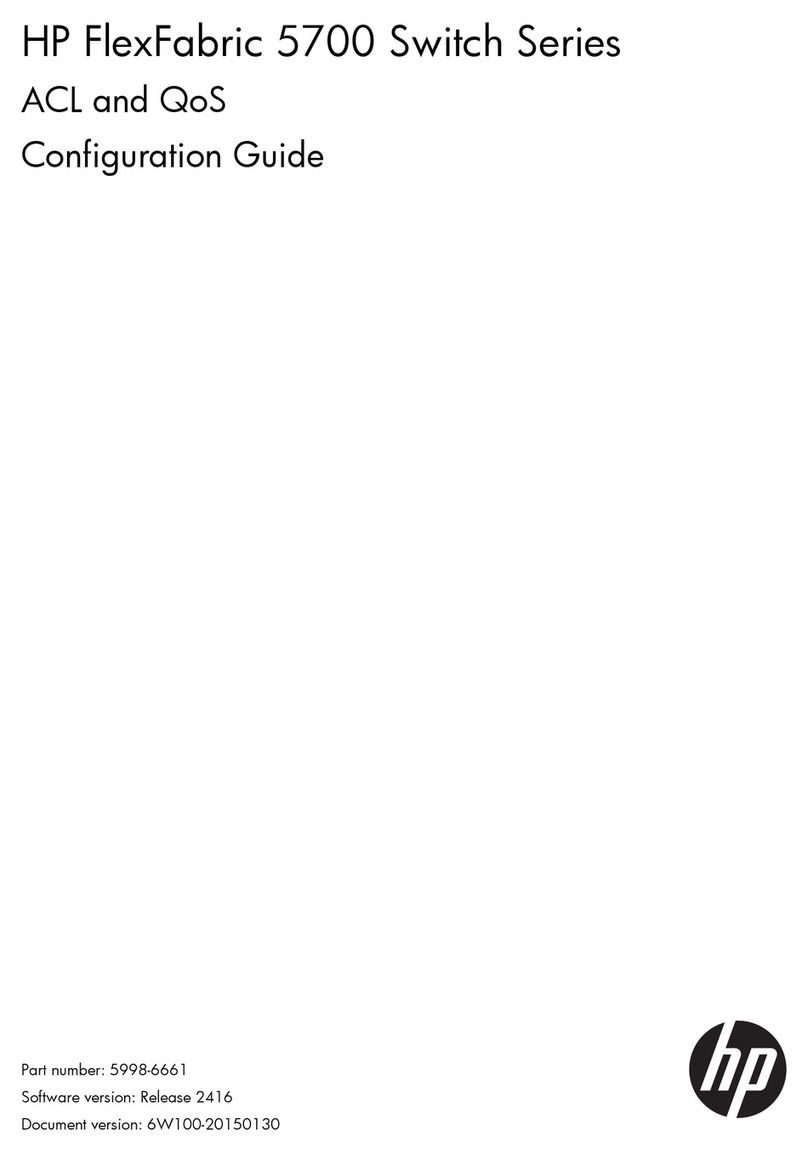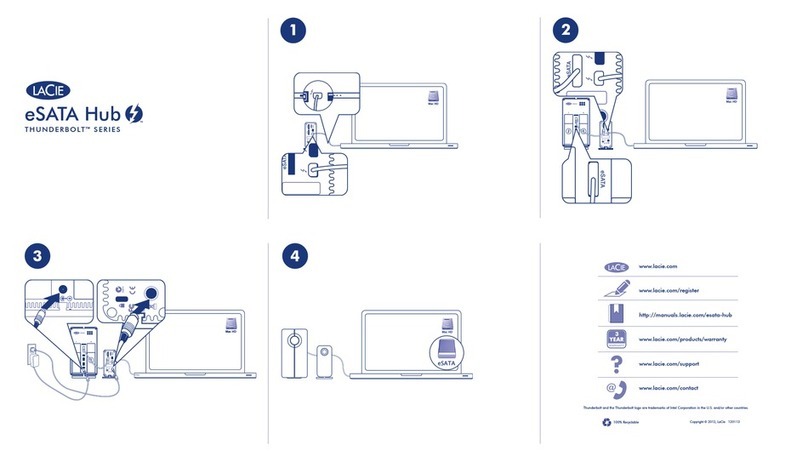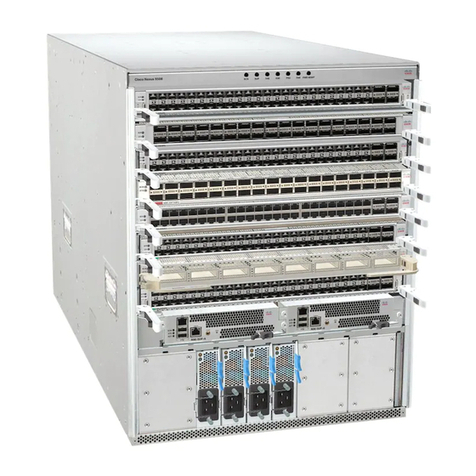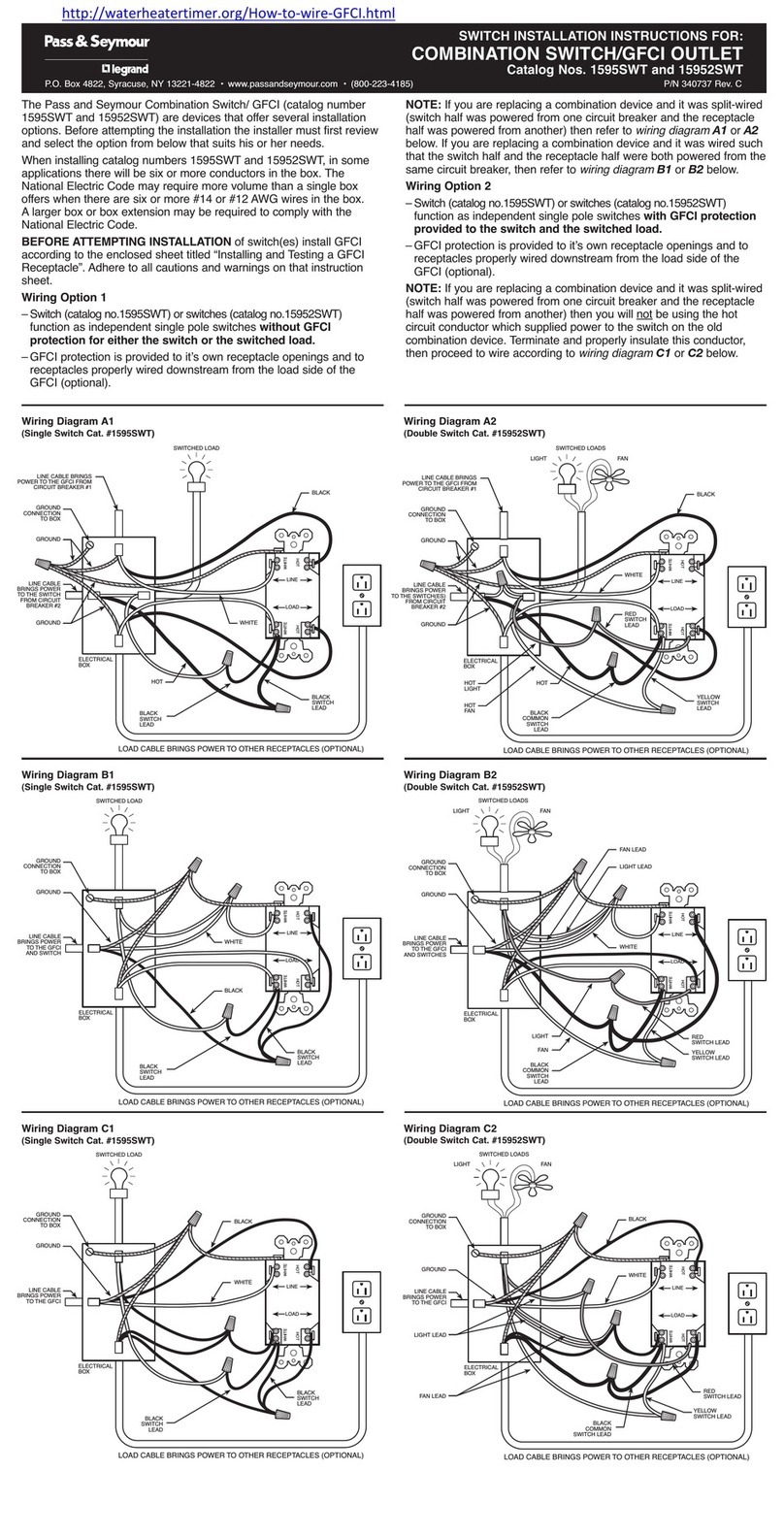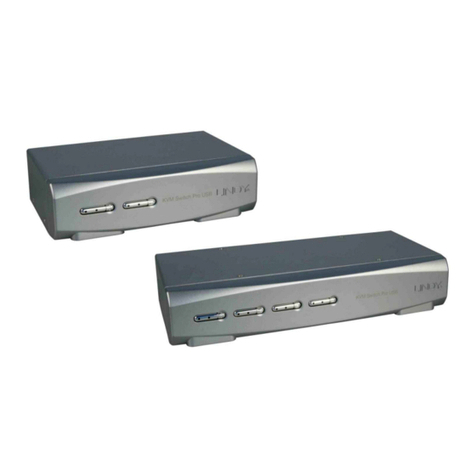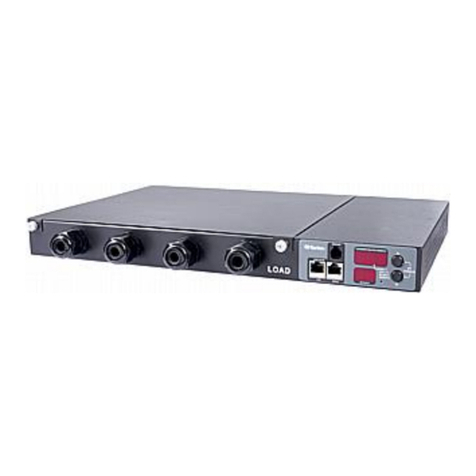OSD NETWORKS OSD2254EP User manual

OSD2254EP
Lite Managed 6-port Ethernet Switch with
SNMP & VLAN
4 x 10/100/1000BASE-T with PoE++ &
2 x Gigabit SFP
Operator Manual


PAGE 3 10115208
OSD2254EP Operator Manual
INDEX 1
1TECHNICAL SUMMARY ................................................................................................5
1.1 BRIEF DESCRIPTION.................................................................................................5
1.1.1 OVERVIEW ...........................................................................................................................5
1.1.2 FEATURES AND BENEFITS ................................................................................................5
1.2 TYPICAL SYSTEM DESIGN........................................................................................6
1.3 TECHNICAL SPECIFICATIONS..................................................................................7
1.4 PORT ALLOCATION....................................................................................................8
2INSTALLATION AND OPERATION...............................................................................9
2.1 INTRODUCTION..........................................................................................................9
2.2 INSTALLATION............................................................................................................9
2.2.1 WARNING AND PRECAUTIONS..........................................................................................9
2.2.2 DRAWINGS AND DIMENSIONS.........................................................................................10
2.2.3 LOCATION ..........................................................................................................................11
2.2.4 POWER SUPPLY CONNECTIONS.....................................................................................11
2.2.5 ALARM CONNECTION.......................................................................................................12
2.2.6 USB CONNECTOR.............................................................................................................13
2.2.7 MINI USB PORT..................................................................................................................14
2.2.8 LED INDICATORS...............................................................................................................15
2.2.9 CONTROLS.........................................................................................................................16
2.2.10 FITTING SFP CONNECTORS ............................................................................................18
2.3 OPERATION..............................................................................................................19
2.3.1 CONNECTIONS..................................................................................................................19
2.4 COMMAND LINE INTERFACE..................................................................................21
2.4.1 TERMINAL EMULATION SETUP........................................................................................21
2.4.2 COMMAND LINE FUNCTIONS...........................................................................................22
3WEB GUI.......................................................................................................................41
3.1.1 LOGGING ON TO THE SWITCH ........................................................................................42
3.1.2 GUI MENU...........................................................................................................................43
4MAINTENANCE ............................................................................................................68
4.1 INTRODUCTION........................................................................................................68
4.2 EXTERNAL INSPECTION .........................................................................................68
4.3 ROUTINE MAINTENANCE........................................................................................68
5WARRANTY..................................................................................................................69
5.1 WARRANTY PERIOD................................................................................................69
5.2 REPAIRS ...................................................................................................................69
5.2.1 WARRANTY REPAIRS .......................................................................................................69
5.2.2 OUT-OF-WARRANTY REPAIRS.........................................................................................69
5.2.3 SITE REPAIRS....................................................................................................................69
5.2.4 EXCLUSIONS .....................................................................................................................69
FIGURE 1: TYPICAL SYSTEM DESIGN...................................................................................6
FIGURE 2: PORT ALLOCATION...............................................................................................8
FIGURE 3: MOUNTING DIMENSIONS ...................................................................................10
FIGURE 4: POWER SUPPLY CONNECTIONS ......................................................................11
FIGURE 5: ALARM OUTPUTS ................................................................................................12
FIGURE 6: CONTACT CLOSURE OUTPUT ...........................................................................12
FIGURE 7: USB TYPE B CLI PORT........................................................................................13
FIGURE 8: CLI INSTALLATION...............................................................................................13
FIGURE 9: USB CONNECTOR ...............................................................................................14
FIGURE 10: PORT/LED...........................................................................................................15
FIGURE 11: CONTROLS.........................................................................................................16
FIGURE 12: 8-WAY DIP SWITCH ...........................................................................................16
FIGURE 13: FITTING/REMOVING SFP CONNECTORS .......................................................18
FIGURE 14: REDUNDANT RING CONFIGURATION.............................................................19
FIGURE 15: REDUNDANT RING CONNECTION...................................................................20

PAGE 4 10115208
OSD2254EP Operator Manual
FIGURE 16: BUS CONNECTION ............................................................................................20
FIGURE 17: SERIAL PORT SETTINGS..................................................................................21
FIGURE 18: VERSION CHECK...............................................................................................23
FIGURE 19: FACTORY DEFAULT SETTING..........................................................................24
FIGURE 20: IP CONFIGURATION ..........................................................................................25
FIGURE 21: TOPOLOGY CHECK...........................................................................................26
FIGURE 22: TOPOLOGY CHECK...........................................................................................27
FIGURE 23: NODE CHECK.....................................................................................................28
FIGURE 24: LOCAL NODE CHECK........................................................................................29
FIGURE 25: FLOAT BACKUP ENABLED 1.............................................................................30
FIGURE 26: RING TOPOLOGY...............................................................................................30
FIGURE 27: FLOAT BACKUP ENABLED 2.............................................................................31
FIGURE 28: FLOAT BACKUP ENABLED 3.............................................................................31
FIGURE 29: FLOAT BACKUP DISABLED 1............................................................................32
FIGURE 30: FLOAT BACKUP DISABLED 2............................................................................32
FIGURE 31: FLOAT BACKUP DISABLED 3............................................................................33
FIGURE 32: NODE IP SET......................................................................................................34
FIGURE 33: NODE ALL CHECK .............................................................................................34
FIGURE 34: REBOOT..............................................................................................................35
FIGURE 35: SNMP...................................................................................................................36
FIGURE 36: SNMP MENU.......................................................................................................37
FIGURE 37: PORT CONTROL ................................................................................................38
FIGURE 38: PORT SECURITY................................................................................................39
TABLE 1: TECHNICAL SPECIFICATIONS................................................................................7
TABLE 2: POWER CONNECTION ..........................................................................................11
TABLE 3: ALARM CONNECTIONS.........................................................................................12
TABLE 4: LED FUNCTION.......................................................................................................15
TABLE 5: 8-WAY DIP SWITCH SETTINGS ............................................................................16
TABLE 6: POE MODE SWITCH SETTINGS ...........................................................................17
TABLE 7: TERMINAL COMMAND LINES ...............................................................................22

PAGE 5 10115208
OSD2254EP Operator Manual
1 TECHNICAL SUMMARY
1.1 BRIEF DESCRIPTION
1.1.1 OVERVIEW
The OSD2254EP is a 6-port lite managed industrial ethernet switch with four Gigabit RJ45 and two Gigabit
SFP uplink ports which can be used as standard ports or as a redundant fiber ring using OSD’s proprietary
ring protocol. Each RJ45 can provide up to 60W PoE to power a wide range of devices. Along with higher
level features including SNMP, VLAN and IGMP snooping the OSD2254EP is suitable for use in critical
networks. A rugged IP30 casing, fan-less design and wide operating temperature range from -40 to +75ºC
make it suitable for use in a wide range of harsh industrial environments.
1.1.2 FEATURES AND BENEFITS
▲Complies with IEEE802.3i/802.3u/ 802.3ab
10/100/1000Base-T, IEEE802.3z
1000Base-Lx/Sx standards
▲Has a total of six ports: four fixed copper
ports for 10/100/1000Base-T and two SFP
ports for the fiber ring or non-ring
(100Base-Fx or 1000Base-X)
▲A network diameter of hundreds of
kilometers is practical
▲Ring reconfiguration in the case of cable or
switch failures takes less than two
milliseconds per hop
▲MDI/MDIX Crossover: no need for
crossover cables
▲Can be used with either 1 or 2 singlemode
or multimode fiber over a variety of link
budgets via plug in SFP module (sold
separately)
▲Supports IEEE802.3af/at Alternative A and
B cable wiring
▲Complies with IEEE802.3af/at standard
including compliant powered device (PD)
signature detection and classification
▲Customisable PoE via DIP switch or GUI
providing up to 60W to each RJ45 port
supporting both single signature and dual
signature PD detection
▲Auto-Negotiation for half or full duplex
operation
▲Supports 10KB jumbo frames
▲Powered by non-critical 46 to 57VDC
supplies, ie redundant power inputs
▲Integrates with third party NMS system via
industry standard SNMP v1, v2c, v3
▲Supports VLAN and IGMP v1, v2, v3
snooping
▲Port security guaranteed with MAC binding
function
▲Remote PoE on/off control and status
monitoring
▲Operates over the temperature range of -
40°C to +75°C
▲Web browser GUI included
▲Compatible with the OSD22XX series of
redundant ring Gigabit Ethernet switches
▲Available for operation in ring, bus or point-
to-point configuration
▲DIN rail or wall mounting

PAGE 7 10115208
OSD2254EP Operator Manual
1.3 TECHNICAL SPECIFICATIONS
TABLE 1: TECHNICAL SPECIFICATIONS
Hardware
Ethernet
4 x 10/100/1000Base-T RJ45, IEEE802.3i/802.3u/802.3ab
Data Rate
10, 100, 1000Mbps with energy detect, auto negotiate, auto
MDIX
Jumbo Frame Support
10KB
SFP
2 x Gigabit SFP ports (100Mbps or 1000Mbps user selectable)
Optical Data Interface
IEEE802.3z 1000Base-Lx/Sx, IEEE802.3u 100Base-Fx
PoE (user configurable via GUI)
IEEE802.3af/at, PoE++ 60W via GUI
Enclosure Protection Class
IP30
Installation
DIN rail, wall mount or desktop
Alarm (ring version only)
Ring to Bus, High Temperature
Alarm Interface
Opto isolated MOSFET rated at 100mA @ 46V maximum
Alarm Connector
4 way 3.5mm terminal block
DIP Switch
8 way DIP switch for configuration
Power Requirements
46 to 57VDC @ 5VA maximum (no PoE in use) to 245VA
maximum (All 4 ports supplying 60W PoE++ power)
>52VDC recommended for PoE+ or ≥55VDC for PoE++ (60W)
Output PoE Vdrop per port
PoE voltage drop per port <0.5V @ 30W, <1V @ 60W
Power Connector
4 way 5.08mm terminal block
Indicators
4 x Copper Link on each RJ45
4 x Copper Activity on each RJ45
4 x PoE Active on each RJ45
2 x SFP Speed/Activity/Link on each SFP
2 x Redundant Power Supply
1 x Initialise/Ring/Bus
1 x Power/Temperature Alarm
Environmental
-40 to +75ºC
Relative Humidity
0 to 95% non-condensing
Dimensions
43W x 91D x 130H mm
Weight
680g
Management
Interfaces
Command Line Interface (CLI USB Type B)
Web browser based Graphical User Interface (GUI) (Chrome or
Edge browser)
SNMP v1, v2c, v3
Port Configuration
Port enable/disable, Auto negotiation
Port Status
Speed, duplex mode, link status, auto negotiation status
Port Security
MAC address binding
VLAN
802.1Q VLAN
Multicast Protocol
RFC 2236 IGMP snooping v1, v2, v3
Ethernet Redundancy
OSD-Ring
SNMP MIBs
RFC 1213 MIB
Warranty
Warranty Period
5 years
MTBF (Ground Benign Environment,
30ºC)
480,000 hours

PAGE 8 10115208
OSD2254EP Operator Manual
1.4 PORT ALLOCATION
Front Panel: There are four fixed copper ports for 10/100/1000Base-T and two SFP ports.
Top Panel: The top panel consists of a 4-way 5.08mm terminal block power connector and a
4-way 3.5mm terminal block alarm connector.
Bottom Panel: 8-Way DIP switch, Mini USB connector and a Type-B USB connector.
Each section will be described further throughout this manual.
FIGURE 2: PORT ALLOCATION
Front Panel
Top Panel
Bottom Panel
Ring LED
Power LED
Activity LED x 4
PoE LED x 4
RJ45 Port x 4
SFP Port x 2
Alarm Port
Dual Power
Port
Console Port
Programming
Port
Configuration
Switches
Earth Screw
Link LED x 4
Link LED x 2
Power Supply
LED x 2

PAGE 9 10115208
OSD2254EP Operator Manual
2 INSTALLATION AND OPERATION
2.1 INTRODUCTION
This section outlines the methods required to install and operate the OSD2254EP
successfully. It should be studied carefully if damage to the equipment or poor results are to
be avoided.
This equipment has been fully tested prior to dispatch and is ready for immediate operation.
However, it is advisable to check for external transportation damage before operation. If
damage is evident, return the unit with the packaging to your supplier immediately.
2.2 INSTALLATION
2.2.1 WARNING AND PRECAUTIONS
▲ELECTROMAGNETIC COMPATIBILITY
WARNING: This is a Class A product. In a domestic environment this product may cause
radio interference in which case the user may be required to take adequate measures.
▲OPTICAL OUTPUT OPERATION
WARNING: Laser Safety: Class 1 Laser Product per IEC/EN 60825-1:2014 standard.
Class 1
The OSD2254EP is a Class 1 laser product.
PRECAUTIONS
▲All service personnel should be provided training as to the hazards of direct viewing
of laser radiation and of the precautionary measures during servicing of equipment
▲Areas where laser products are installed should be restricted in access to trained
service personnel only and appropriate warning signs posted in the work area.
▲All laser apertures should be covered by protective covers when not connected to
optical fibers. Never leave outputs uncovered.
▲Laser equipment should be positioned above or below eye level where possible.
Apertures should be positioned away from personnel.
▲Protective eyewear should be worn in the vicinity of laser equipment.

PAGE 10 10115208
OSD2254EP Operator Manual
2.2.2 DRAWINGS AND DIMENSIONS
The OSD2254EP is designed to be wall mounted onto a DIN-Rail (35mm top hat) fixture or by
using 4 x M4 captivated screws (DIN Rail mount requires removal and flanges repositioned –
see below). The unit dimensions (excluding connectors, SFPs, etc) is shown in Figure 3
below.
DIN Mount Wall Mount
DIN to Wall Mount Conversion
FIGURE 3: MOUNTING DIMENSIONS
Unscrew x 4
Remove DIN
Unscrew x 2
(Top & Bottom)
Rotate
Screw x 2
(Top & Bottom)

PAGE 11 10115208
OSD2254EP Operator Manual
2.2.3 LOCATION
As with any electrical device, the OSD2254EP should be placed where the switch will not be
subjected to extreme temperatures, humidity, or electromagnetic interference. Specifically,
the site selected should meet the following requirements:
•The ambient temperature should be between -40°C to 75°C.
•The relative humidity should be less than 95 percent, non-condensing.
•Surrounding electrical devices should not exceed the electromagnetic field (RFC)
standards.
•Make sure that the switch receives adequate ventilation. Do not block the ventilation
holes on any side of the switch.
Note: Without proper cooling and control (lowering) of ambient temperature, the components
within the OSD2254EP can be subject to increased heat shortening the longevity and
reliability. It is thus good engineering practice to ensure the unit is installed in a well ventilated
area.
2.2.4 POWER SUPPLY CONNECTIONS
The OSD2254EP requires external power to the Redundant DC Terminal Block Power
Connector located at the top of the unit. Always ensure that the power is off before any
installation.
Redundant DC Terminal Block Power Inputs
There are two pairs of power inputs for use with redundant power sources. Only one power
input is required to be connected to run the switch.
Step 1: Connect the DC power to the appropriate power source, connect the plug-able
terminal block on the OSD2254EP switch and then turn power on.
Step 2: Disconnect the power if you want to shut down the switch.
TABLE 2: POWER CONNECTION
External Power Pin
Specification
Power 1 +
46VDC to 57VDC @ 260VA*
Power 1 0V
Ground –0V
Power 2 +
46VDC to 57VDC @ 260VA*
Power 2 0V
Ground –0V
Earth Ground Connection
*≥52VDC recommended for PoE+ or ≥ 55VDC for 60W PoE
FIGURE 4: POWER SUPPLY CONNECTIONS

PAGE 12 10115208
OSD2254EP Operator Manual
2.2.5 ALARM CONNECTION
The OSD2254EP has two monitoring alarm outputs: 1) Ring to Bus Alarm and 2)
Temperature Alarm. The alarm connections and conditions for alarm outputs are as set out in
Table 3. There are four pins on the 3.5mm terminal block used alarm output. Maximum
ratings the OSD2254EP relay can drive is 100mA @ 46V(max). Note: Alarm output has no
polarity.
TABLE 3: ALARM CONNECTIONS
Alarm
Output
Alarm 1
Ring /Bus Status
Alarm 2
Temperature
Open
Ring
Less than 80C
Closed
Bus*
Higher than 80C
*Note: Bus alarm is only triggered after a ring connection is established.
FIGURE 5: ALARM OUTPUTS
FIGURE 6: CONTACT CLOSURE OUTPUT
Alm1
Alm2
OSD2254EP

PAGE 13 10115208
OSD2254EP Operator Manual
2.2.6 USB CONNECTOR
The OSD2254EP has a USB –Type B connector located on the bottom of the unit that is
used for Command Line Interface (CLI) from the PC to the OSD2254EP via the PC’s USB
connector. See section 2.4 for further CLI information.
FIGURE 7: USB TYPE B CLI PORT
To operate and control the OSD2254EP using the CLI, a proprietary driver will be required to
be installed onto the PC being used. The driver can be found and downloaded via the
following site: www.silabs.com and searching for the CP210x driver. Download the relevant
driver for your operating system, install and follow the installation instructions from your PC.
FIGURE 8: CLI INSTALLATION
USB Type B - CLI Port

PAGE 14 10115208
OSD2254EP Operator Manual
2.2.7 MINI USB PORT
The Mini USB Port is used for uploading firmware updates. All OSD2254EP units will be
shipped with the latest firmware already installed. This port has no function for end user.
FIGURE 9: USB CONNECTOR
Mini USB Port

PAGE 15 10115208
OSD2254EP Operator Manual
2.2.8 LED INDICATORS
FIGURE 10: PORT/LED
TABLE 4: LED FUNCTION
No
Function
LED Colour Function
On
Blink
Off
Green
Gr/Am
Amber
Power
-
No Power
Power
-
-
Ring/Bus
Initial
Non-Ring
Ring
-
-
-
Activity
No Activity
1G/100M/10Mbps
-
-
PoE
-
No Load
PoE Load
Detected
-
-
Link
-
No Link
-
-
On
Fiber Link
Activity
No Link
1Gbps
-
100Mbps
Power
Supply 1
-
Not
Connected
Power On
-
-
Power
Supply 2
-
Not
Connected
Power On
-
-

PAGE 16 10115208
OSD2254EP Operator Manual
2.2.9 CONTROLS
The OSD2254EP has an 8-way DIP switch to control a number of functions. Table 5 outlines
the function of each switch.
FIGURE 11: CONTROLS
FIGURE 12: 8-WAY DIP SWITCH
TABLE 5: 8-WAY DIP SWITCH SETTINGS
SWITCH
NUMBER
DESCRIPTION
FUNCTION
SWITCH
POSITION
1
GUI Mode
GUI Enabled
ON*
GUI Disabled
OFF
2
PoE Mode [2]
See Table 6 for PoE Mode Function
OFF*
3
PoE Mode [1]
See Table 6 for PoE Mode Function
OFF*
4
PoE Mode [0]
See Table 6 for PoE Mode Function
OFF*
5
Ring/Bus
Non-Ring
ON
Ring
OFF*
6
Port 5 Fiber Speed
100Mbps
ON
1000Mbps
OFF*
7
Port 6 Fiber Speed
100Mbps
ON
1000Mbps
OFF*
8
Reserved
Erase Mode
ON
Normal Operation/User Mode
OFF*
* Default settings.
ϮAt Off position and power-up, unit will switch to default settings.
Note: The unit requires a power cycle (Off/On) for any switch position change to take effect.
ON
OFF
1
2
3
4
5
6
7
8
8-Way DIP Switch

PAGE 17 10115208
OSD2254EP Operator Manual
TABLE 6: POE MODE SWITCH SETTINGS
PoE
[2]
PoE
[1]
PoE
[0]
PoE Function
0
0
0
802.3at/af Standard Mode (Default Setting)
0
0
1
Detection & Classification on one channel. Power supply on one
channel
0
1
0
Detection & Classification on one channel. Power supply on one
channel, Legacy device feature enabled
0
1
1
Reserved Mode
1
0
0
Detection & Classification on one channel. Power supply on two
channels
1
0
1
Detection & Classification on one channel. Power supply on two
channels. Inrush current feature enabled.
1
1
0
Detection & Classification on two channels. Power supply on two
channels.
1
1
1
Reserved Mode
•Ch0: Pins 1,2 and Pins 3,6 on RJ45
•Ch1: Pins 4,5 and Pins 7,8 on RJ45
For manually controlled modes (apart from 802.3at/af standard mode: 000), power limitation
rules are as follows:
For 60W device:
One PoE channel provides power (mode 001, 010): Max output power is 45W
Two PoE channels provide power (mode 100, 101, 110): Max output power is 70W
For 90W device:
One PoE channel provides power (mode 001, 010): Max output power is 45W
Two PoE channels provide power (mode 100, 101, 110): Max output power is 90W
For 802.3at/af standard mode (000), power limitation follows the classification result ie
802.3at/af standard.
For reserved modes (011, 111), PoE function is disabled on each port.

PAGE 18 10115208
OSD2254EP Operator Manual
2.2.10 FITTING SFP CONNECTORS
Care should be taken when inserting/removing the SFP connectors from SFP port 5 and 6 as
SFP modules are Electrostatic (ES) sensitive and Electrostatic Discharge (ESD) precautions
should be taken when installing. Ensure that the SFP is fully engaged and latched into
position.
Inserting SFP –Ensure that the SFP lever is in the locked position and insert into appropriate
SFP port. Gently push the SFP until it locks into place. Remove plastic/rubber dust cap and fit
fiber cable or RJ45 plug.
Removing SFP –Remove fiber connector or RJ45 plug. Pull the SFP lever down to unlock
SFP from housing. Using the lever, gently pull the SFP out.
Fiber SFP
Copper SFP
FIGURE 13: FITTING/REMOVING SFP CONNECTORS
Inserting
SFP
Removing
SFP
1
2
Inserting
SFP
Removing
SFP
1
2

PAGE 19 10115208
OSD2254EP Operator Manual
2.3 OPERATION
When using the OSD2254EP for the first time, check that the unit is in good condition with no
visible damage.
Upon power up check that the indicators illuminate accordingly on power up (see Table 4).
2.3.1 CONNECTIONS
For RJ45 connection use Category 5 (CAT5) or higher. Length should be no more than 100
meters.
For singlemode fiber connections, fiber used must be 9/125μm singlemode fiber.
For multimode fiber connections, fiber used must be 50/125μm or 62/125μm multimode fiber.
Plug in the appropriate connectors for system configuration;
–RJ45 cable to fixed copper ports (port 1 and 2) and copper SFP modules
–LC or SC fiber cable to fiber SFP modules.
Redundant Ring Operation
The OSD2254EP connected in a redundant ring topology providing maximum reliability on
critical networks (up to 64 nodes per ring). In the event of device or fiber failure the data path
will automatically switch to a secondary path in less than 2ms per node to maintain ring
network integrity.
FIGURE 14: REDUNDANT RING CONFIGURATION

PAGE 20 10115208
OSD2254EP Operator Manual
To connect the OSD2254EP in a redundant ring configuration ports 5 and 6 must be used
together with fiber SFPs. The non-ring ports (ports 1,2,3 & 4) should be used to connect to
your Ethernet devices (eg. Cameras, PLCs, computers, etc.)
Figure 15 shows the connection method. Typically, the SFP used would be a fiber SFP with
duplex LC connectors. The dashed line indicates the closed loop, but more OSD2254EP units
can be connected to the ring as required using this topology. Ensure that the switch settings
for port 5 and 6 are set to 1000Mbps (1Gbps) –see Table 5. Note: connection diagram is for
illustrative purposes only. Port 5/6 can be connected in to either port to achieve redundant
ring configuration.
FIGURE 15: REDUNDANT RING CONNECTION
Bus Operation
To connect the OSD2254EP in a bus configuration ports 5 and 6 must be used together with
fiber SFPs. The remaining ports (ports 1,2,3 & 4) should be used to connect to your Ethernet
devices (eg. Cameras, PLCs, computers, etc.)
FIGURE 16: BUS CONNECTION
Connect more OSD2254EP units as required using this
topology
Connect more OSD2254EP units as required using this
topology
Table of contents
Other OSD NETWORKS Switch manuals
Popular Switch manuals by other brands

Eurotec
Eurotec EFX-EIA Series operating instructions
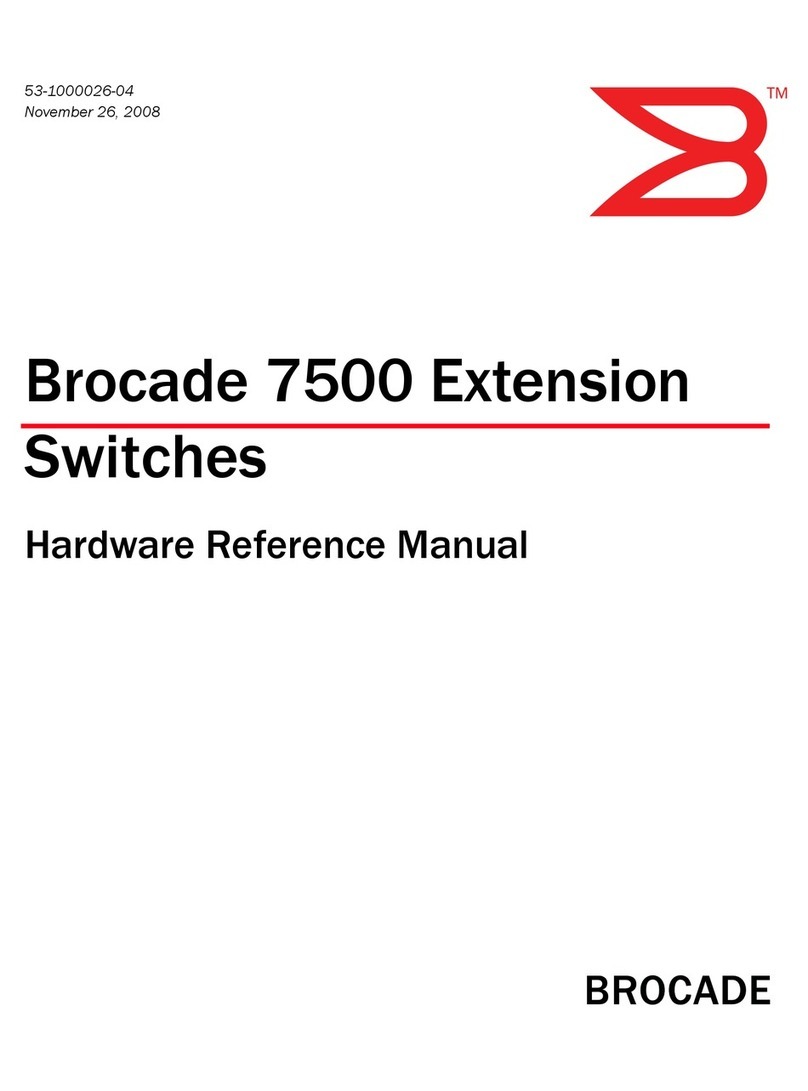
Brocade Communications Systems
Brocade Communications Systems 7500 Extension Hardware reference manual
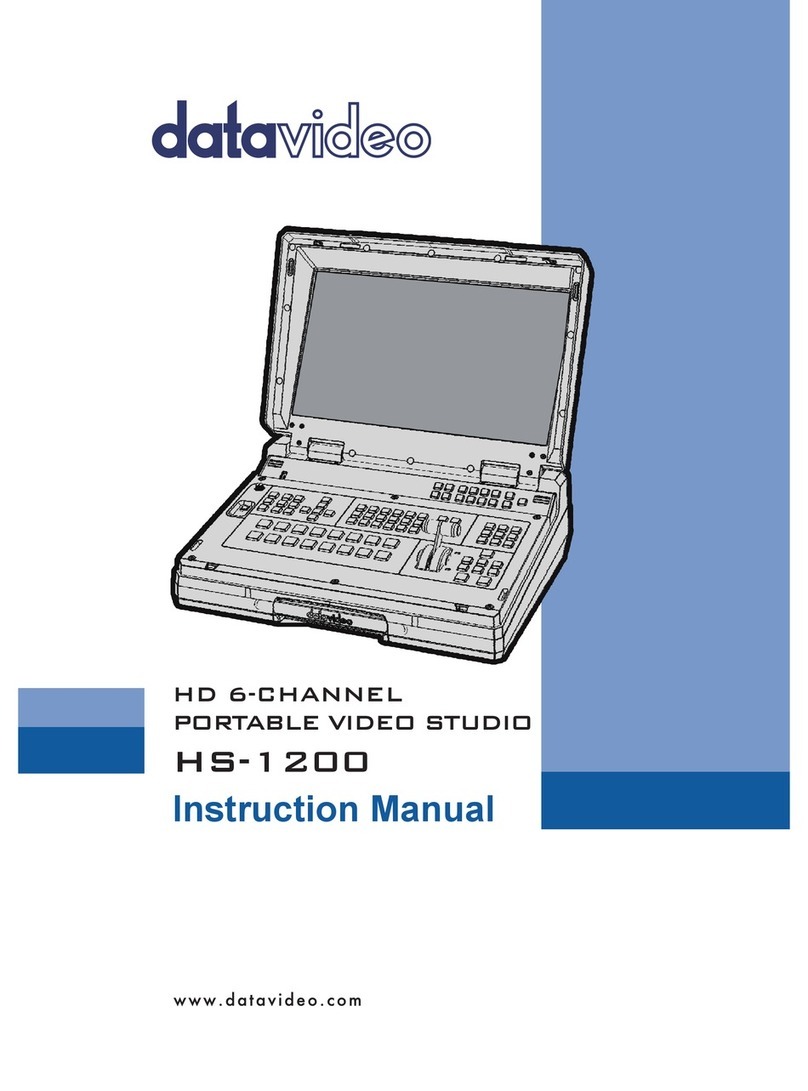
Data Video
Data Video HS-1200 instruction manual
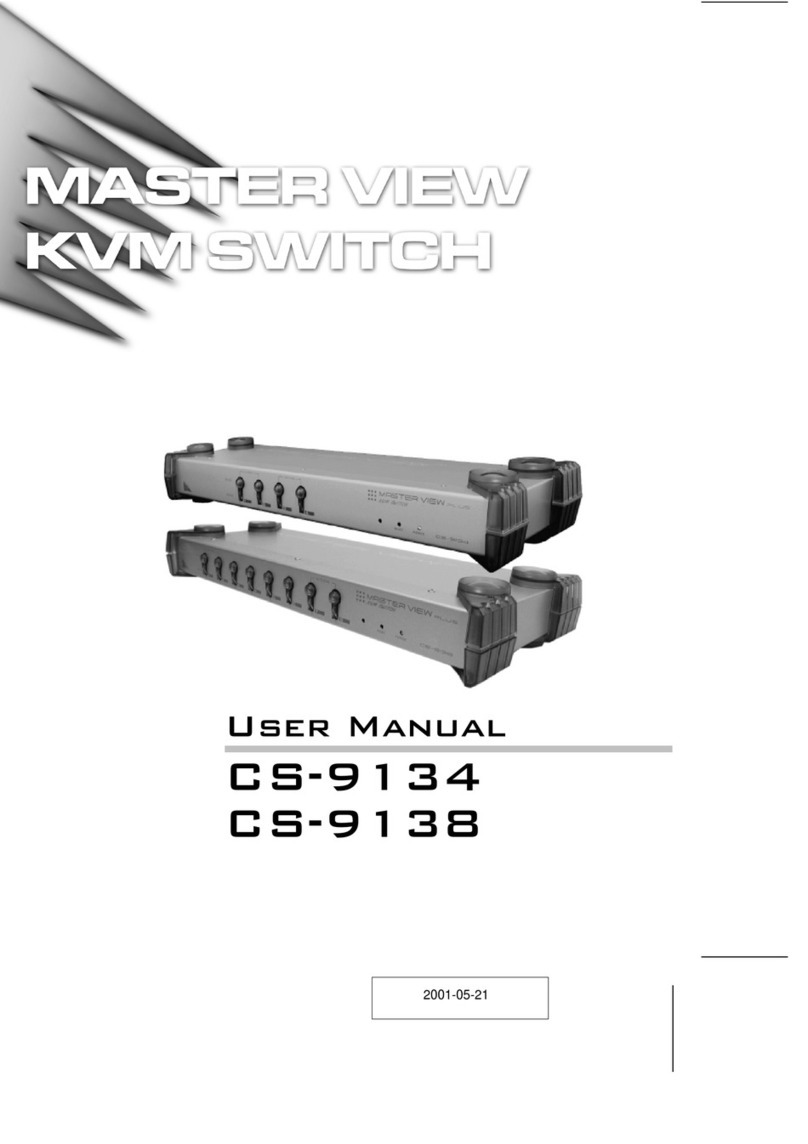
ATEN
ATEN Master View CS-9134 user manual
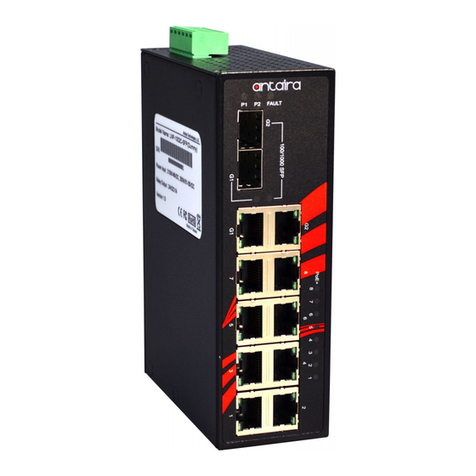
ANTAIRA
ANTAIRA LNP-1002C-SFP-T user manual

DeLOCK
DeLOCK 87704 user manual
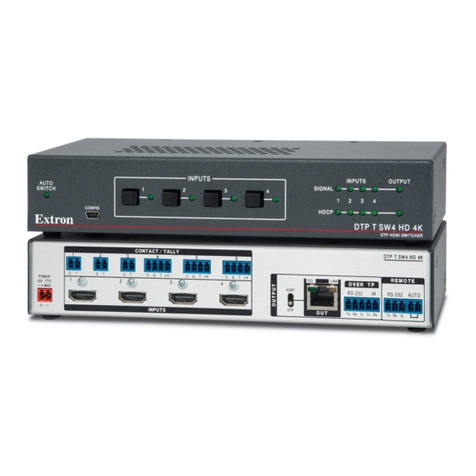
Extron electronics
Extron electronics DTP T SW4 HD 4K user guide
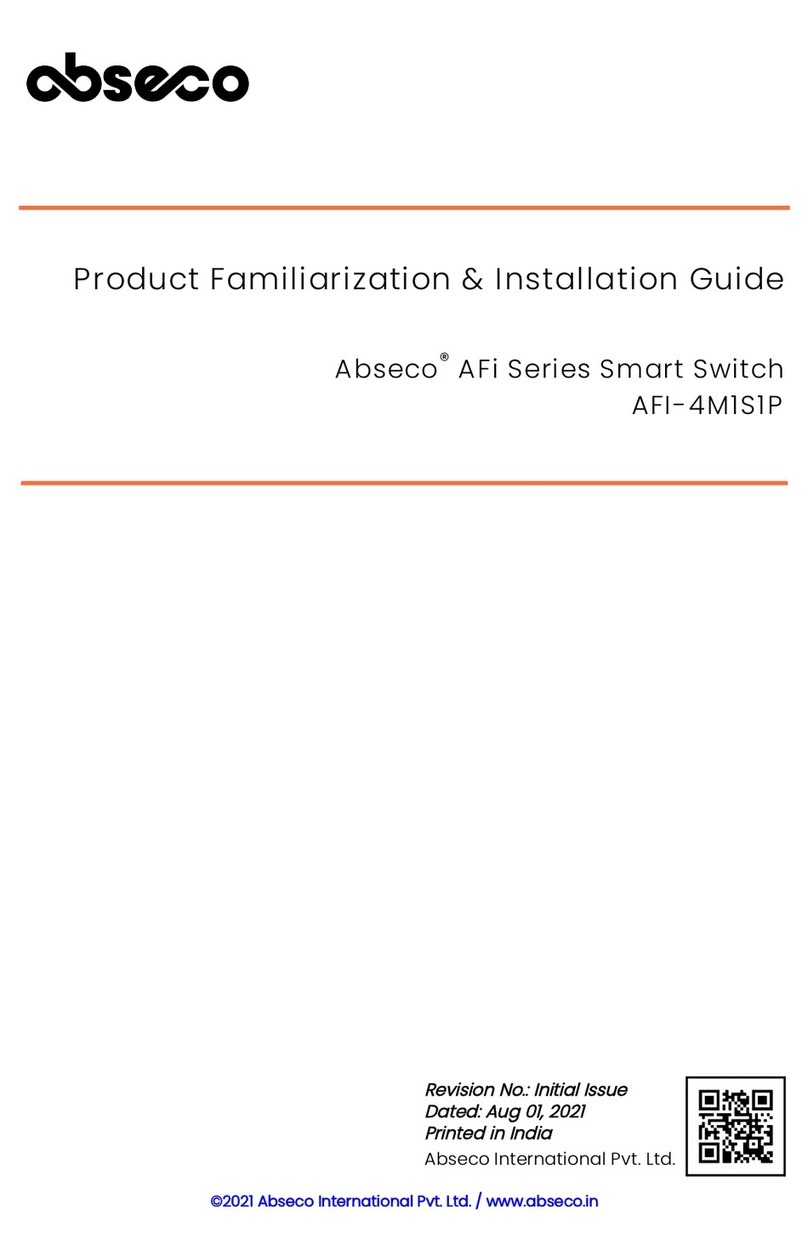
Abseco
Abseco AFI-4M1S1P installation guide
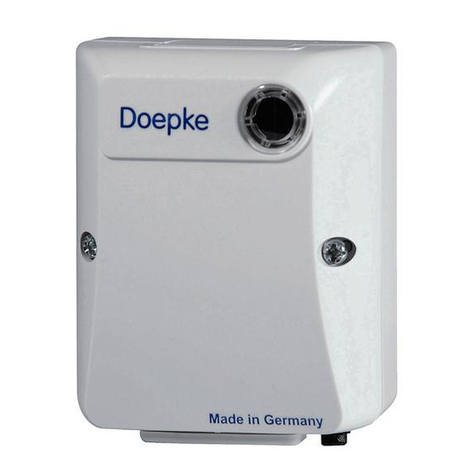
Doepke
Doepke DASY 10-2/24V Installation and operating instructions

Micas
Micas M2-W6510-48GT4V Hardware installation and reference guide
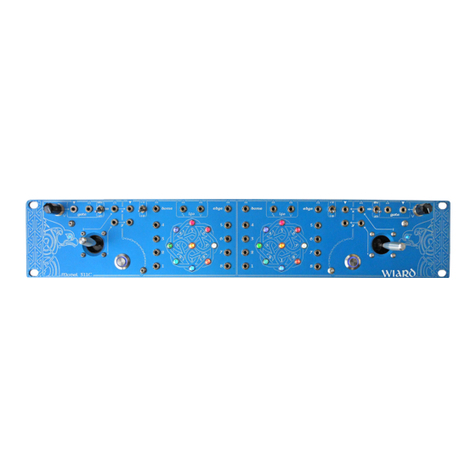
Wiard
Wiard 311C quick start guide
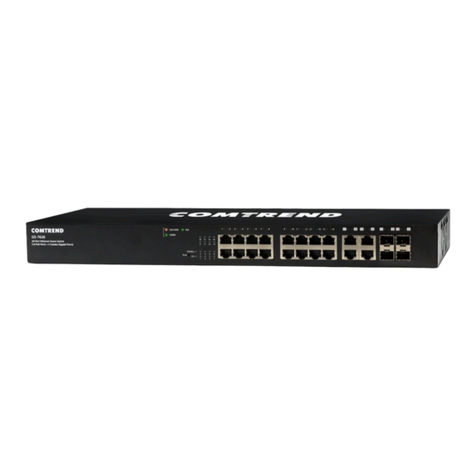
Comtrend Corporation
Comtrend Corporation GS-7620 Quick installation guide

